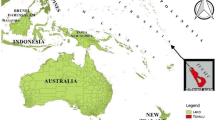Abstract
Reasonable development and utilization of spatial resources in the coastal zone not only affects the development quality of the marine economy but also impacts the utilization efficiency of spatial resources, playing an important role in regional sustainable development. Depending on the natural, economic, and societal characteristics of a region, research topics such as using relevant methods to divide the coastline, proper spatial development of the coast, protecting coastal zones, and achieving higher spatial resource distribution efficiency have recently become hot topics in geographic research. Most of the scholars construct the evaluation index system from the perspective of economic and ecological factors and undertake some exploration of the division methods. However, the selection of indicators for a coastal zone needs a different and more scientific approach. There is a need for emphasizing the overall strategy of land-ocean integration in developing spatial resources in a coastal zone. Taking the coastal zone in Ningbo as an example, this paper develops a new evaluation framework and spatial function regionalization method that is used to divide the coastline and coastal zone. Based on the perspective of overall strategy for the land and ocean, we evaluate the suitability of coastline development. We then propose the spatial function regionalization of the coastal zone. Finally, based on the status quo of spatial development in Ningbo, we divide the coastal zone into ecological space, production space and living space, and propose adjustment directions and control requirements for the different types of spatial layouts.
Similar content being viewed by others
References
Ajith J K, 2016. Concepts and policies of Integrated Coastal Zone Management (ICZM). In: Training Programme on Geomatics for Coastal Zone Management, April 18–22.
Altunkaynak A, 2015. Prediction of significant wave height using spatial function. Ocean Engineering, 106: 220–226.
Armstrong J M, Ryner P C, 1986. American Ocean Management. Beijing: China Ocean Press.
Bradley J R, Wikle C K, Holan S H, 2016. Regionalization of multiscale spatial processes by using a criterion for spatial aggregation error. Journal of the Royal Statistical Society, 79(3): 815–832.
Bronfenbrenner U E, 2004. Making Human Beings Human: Bioecological Perspectives on Human Development. The SAGE Program on Applied Developmental Science. Sage Publications, 336.
Chen W, 2008. Economic Analysis on Space Equilibrium. Beijing: The Commercial Press. (in Chinese)
Domínguez-Tejo E, Metternicht G, Johnston E et al., 2016. Marine spatial planning advancing the ecosystem- based approach to coastal zone management: A review. Marine Policy, 72: 115–130.
Dreizis Y I, 2015. Integrated coastal zone management is the main mechanism for sustainable development of the sea region. Modeling of Artificial Intelligence, 5(1): 4–8.
Duck R W, 2012. Marine spatial planning: Managing a dynamic environment. Journal of Environmental Policy and Planning, 14(1): 67–79.
Fan J, 2007. Scientific foundation of principal function regionalization in China. Acta Geographica Sinica, 62(4): 339–350. (in Chinese)
Gleason M, Mccreary S, Miller-Henson M et al., 2010. Science-based and stakeholder-driven marine protected area network planning: A successful case study from North Central California. Ocean and Coastal Management, 53(2): 52–68.
Goble B J, Lewis M, Hill T R et al., 2014. Coastal management in South Africa: Historical perspectives and setting the stage of a new era. Ocean and Coastal Management, 91: 32–40.
Grantham H S, Mcleod E, Brooks A et al., 2011. Ecosystem-based adaptation in marine ecosystems of tropical Oceania in response to climate change. Pacific Conservation Biology, 17(3): 241–258.
Gu C L, Zhang X M, Liu J Y et al., 2007. The development space regionalization of Yancheng and the deliberation on it. Acta Geographica Sinica, 62(8): 787–798. (in Chinese)
Huang J C, Lin H X, Qi X X, 2017. Spatial development regionalization of the Beijing-Tianjin-Hebei Region from the perspective of spatial governance. Progress in Geography, 36(1): 46–57. (in Chinese)
Liang X B, 2005. Research on the method for marine function regionalization and its application [D]. Tianjin: Tianjin Normal University. (in Chinese)
Marre J B, Thebaud O, Pascoe S et al., 2015. The use of ecosystem services valuation in Australian coastal zone management. Marine Policy, 56: 117–124.
McGlashan D J, Duck R W, 2013. The PDMU approach to the integration of coastal management. Journal of Coastal Research, 26(3): 465–469.
Najafinasab F, Karbassi A R, Ghoddousi J, 2015. Fuzzy analytic network process approach to evaluate land and sea criteria for land use planning in coastal areas. Ocean and Coastal Management, 116: 368–381.
Ramessur R T, 2015. Integrated coastal zone management: Ecological, socio-economic and governance challenges. Journal of Coastal Zone Management, 18: 2. doi: 10.4172/2473-3350.1000e112
Ramsey V, Cooper J A G, Yates K L, 2015. Integrated coastal zone management and its potential application to Antigua and Barbuda. Ocean and Coastal Management, 118: 259–274.
Santoso P B, Halog A, 2017. Science based modelling for supporting integrated coastal zone management. In: Environmental Modeling with Stakeholders. Springer International Publishing, 307–325.
State Oceanic Administration (SOA), 2017. Bulletin of China Marine Economic Statistics. http://www.coi.gov.cn/gongbao/jingji/201703/t20170330_35419.html. 2017-03-30.
Sun W, 2010. Research on the admittance and collocation of elements for spatial function regionalization and governance in urban areas: A case study of Wuxi [D]. Beijing: Graduate University of the Chinese Academy of Sciences. (in Chinese)
Sun W, 2013. The Theory, Methods and Applications of Spatial Function Regionalization. Beijing: Science Press. (in Chinese)
Sun W, Chen W, 2009. Research on urban space development suitability regionalization and layout guide: A case study in Ningbo City. Journal of Natural Resources, 24(3): 402–413. (in Chinese)
Author information
Authors and Affiliations
Corresponding author
Rights and permissions
About this article
Cite this article
Sun, W., Chen, C. & Wang, L. Spatial function regionalization and governance of coastal zone: A case study in Ningbo City. J. Geogr. Sci. 28, 1167–1181 (2018). https://doi.org/10.1007/s11442-018-1548-z
Received:
Accepted:
Published:
Issue Date:
DOI: https://doi.org/10.1007/s11442-018-1548-z




